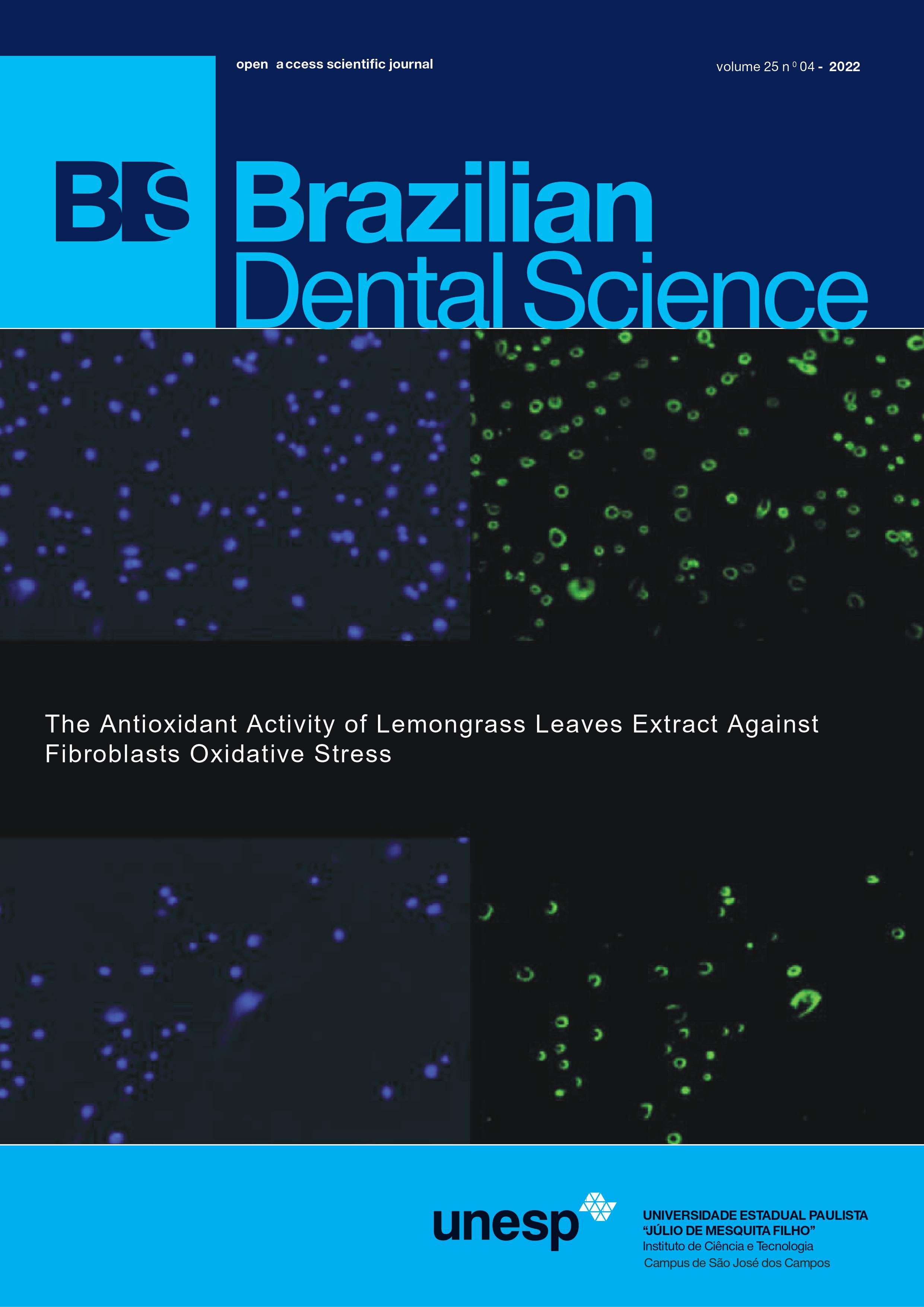Characterization of sound enamel and natural white spot lesions
DOI:
https://doi.org/10.4322/bds.2022.e3488Resumo
Objective: To compare optical, morphological, chemical, and physical aspects of the sound enamel and white
spot lesions (WSL) classified as ICDAS 2. Material and Methods: Seventeen human molars with one surface
presenting WSL and a sound surface (2 x 2 mm window) were characterized by Quantitative light-induced
fluorescence (QLF®), Optical coherence tomography (OCT), microhardness, and Raman spectroscopy. The ANOVA
and Tukey’s test were used at 5% significance level. Results: The QLF comparison between distinct substrates
yielded decreased Q (integrated fluorescence loss) of -15,37%mm2 and -11,68% F (fluorescence loss) for
WSL. The OCT detected mean lesion depth of 174,43 um. ANOVA could not detect differences in the optical
attenuation coefficient between the substrates (p>0.05). Lower microhardness measures were observed in WSL
than on sound enamel (p<0.05). The Raman spectra showed four vibrational phosphate bands (v1, v2, v3, v4),
where the highest peak was at 960.3 cm-1 (v1) for both substrates. However, a 40% decrease in phosphate (v1)
was detected in WSL. The peak at 1071 cm-1 was higher for sound enamel, indicating the presence of a phosphate
band instead of the B-type carbonate. The spectra showed higher intensity of the organic composition at 1295 cm-1
and 1450 cm-1 for WSL. Conclusion: Non-invasive QLF, OCT and Raman spectroscopy were able to distinguish
differences in fluorescence, optical properties, and organic/inorganic components, respectively, between sound
enamel and WSL, validated by the destructive microhardness analysis.
KEYWORDS
Dental caries; Dental enamel; White-spot lesions; Diagnosis; Raman Spectroscopy.
Downloads
Downloads
Publicado
Como Citar
Edição
Seção
Licença
TRANSFERÊNCIA DE DIREITOS AUTORAIS E DECLARAÇÃO DE RESPONSABILIDADE
Toda a propriedade de direitos autorais do artigo "____________________________________________________________________" é transferido do autor(es) para a CIÊNCIA ODONTOLÓGICA BRASILEIRA, no caso do trabalho ser publicado. O artigo não foi publicado em outro lugar e não foi submetido simultaneamente para publicação em outra revista.
Vimos por meio deste, atestar que trabalho é original e não apresenta dados manipulados, fraude ou plágio. Fizemos contribuição científica significativa para o estudo e estamos cientes dos dados apresentados e de acordo com a versão final do artigo. Assumimos total responsabilidade pelos aspectos éticos do estudo.
Este texto deve ser impresso e assinado por todos os autores. A versão digitalizada deverá ser apresentada como arquivo suplementar durante o processo de submissão.




























